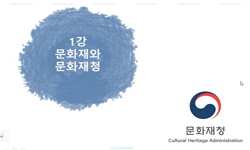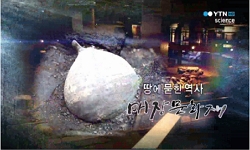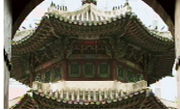본 논문은 일제강점기에 조선총독부가 조선에서 실시한 문화재 관련 정책과 이 과정에서 조선의 문화재가 일본으로 반출된 사례를 살펴보고자 하였다. 또한 일제에 의해 조선의 문화재가 ...
http://chineseinput.net/에서 pinyin(병음)방식으로 중국어를 변환할 수 있습니다.
변환된 중국어를 복사하여 사용하시면 됩니다.
- 中文 을 입력하시려면 zhongwen을 입력하시고 space를누르시면됩니다.
- 北京 을 입력하시려면 beijing을 입력하시고 space를 누르시면 됩니다.
https://www.riss.kr/link?id=T13989879
- 저자
-
발행사항
춘천 : 강원대학교, 2016
-
학위논문사항
학위논문(석사)-- 강원대학교 대학원 : 사학과 2016. 2
-
발행연도
2016
-
작성언어
한국어
- 주제어
-
KDC
911.06 판사항(6)
-
발행국(도시)
강원특별자치도
-
기타서명
The transfer of Cultural Assets During Japanese Colonial Era and the Joseon People's Reaction
-
형태사항
66 L. : 삽도 ; 26 cm
-
일반주기명
강원대학교 논문은 저작권에 의해 보호받습니다.
지도교수 : 손승철
참고문헌 : L 48-51. - 소장기관
-
0
상세조회 -
0
다운로드
부가정보
국문 초록 (Abstract)
본 논문은 일제강점기에 조선총독부가 조선에서 실시한 문화재 관련 정책과 이 과정에서 조선의 문화재가 일본으로 반출된 사례를 살펴보고자 하였다. 또한 일제에 의해 조선의 문화재가 피해를 입는 상황에 대해 조선인들은 어떻게 인식하고 대응하였는가에 대해서도 파악하고자 하였다.
조선총독부는 문화재 관련 정책의 일환으로 관련 법령을 제정하여 조선의 문화재를 그들의 통제 아래 두고자 하였다. 1916년부터는 5개년에 걸친 고적조사사업을 실시하였는데 그 목적은 한반도의 타율성론, 임나일본부설과 같은 식민지배를 정당화할 수 있는 이론과 관련된 고고학적 증거를 찾아내는 것이었다. 때문에 조사가 특정지역에 집중되어 이루어지는 모습을 보이며 조사 과정 중에 발굴된 문화재들을 학술조사라는 명목으로 일본으로 반출시키기도 하였다.
일제강점기 전반에 거쳐 일제는 수많은 조선의 문화재를 일본으로 반출하였다. 문화재 반출은 통감부나 조선총독부의 공권력 개입뿐만 아니라 일본인 개인의 도굴이나 밀거래 등에 의해서도 이루어졌다. 이들은 당시 문화재의 이동이 법적으로 금지되었음에도 불구하고 몰래 반출해갔다. 일본인들이 반출해간 문화재는 고적조사 중 발견된 발굴품, 그리고 석조유물, 건조물, 도자, 서적 등 그 유형이 매우 다양하며 현재까지 파악된 반출 수량은 약 6만 7천점에 이른다.
당시 조선인들 사이에서는 이와 같은 일제의 문화재 약탈에 대하여 대항하고자 하는 움직임이 있었다. 당시 조선인들은 일본인들에 의해 이루어지는 무분별한 고분 도굴이나 문화재 반출에 대해 부정적인 인식을 가지고 있었다. 또한 관리되지 못하고 쇠락해가는 문화재에 대해 안타까워하기도 하였다. 이러한 인식을 바탕으로 조선인들이 문화재를 수집하여 수리하는 사례를 찾아볼 수 있었다. 특히, 이 시기에 문화재를 지키고자 노력했던 인물로는 간송 전형필이 대표적이라고 할 수 있다. 전형필은 일본으로부터 귀중한 문화재를 보호하기 위해 자신의 재산을 투자하여 수많은 문화재를 수집하였다. 뿐만 아니라 수집한 문화재들을 보호하기 위해 ‘보화각’이라는 사립박물관을 개관하기도 하였다. 전형필과 비슷한 문화재 수장가들로는 오세창, 손재형, 이병직 등이 있다. 오세창은 전형필의 스승으로 미술 관련 서적들을 집필하였고 손재형은 일본인에게 넘어간 김정희의 작품 「세한도」를 직접 일본으로 건너가 찾아왔다. 이병직 역시 막대한 재산을 바탕으로 다량의 가치있는 문화재를 수집하여 보관하였다. 또한 조선의 문화재를 지키기 위해 결성된 단체들도 있었다. ‘화양소제고적보존회’는 대전지역 최초의 민간에 의해 설립된 문화재보존단체였다. 이들은 우암 송시열과 관련된 문화재들을 수집하고 보호하고자 하였다. 개성지역에서는 ‘개성보승회’가 결성되어 지역의 문화재를 보존하고 알리고자 하였다.
직접적인 문화재 보호 활동 외에도 민족문화를 수호하기 위해 노력한 단체도 있다. 황씨 사형제로 알려진 황종하, 황성하, 황경하, 황용하는 형제가 모두 조선의 전통회화를 계승하였다. 황씨 사형제가 결성한 ‘송도서화연구회’는 미술교육과 전람회 개최를 통해 후학을 양성하고 일반인들에게 미술에 대한 관심을 불러일으켰다.
이처럼 일제강점기동안 일본인에 의한 문화재 약탈이 무분별하게 이루어졌으나 이에 대응하여 문화재를 지켜야 한다고 인식한 조선인들이 있었다. 일반인부터 전문가에 이르기까지 여러 인물과 단체들이 조선의 문화재와 민족문화를 수호하고자 노력하였다.
다국어 초록 (Multilingual Abstract)
This thesis was intended to examine the cultural asset-related policy implemented by Japan in Joseon during Japanese colonial era and to examine the cases that Joseon's cultural assets were taken out of Joseon to Japan during this process. Also, it wa...
This thesis was intended to examine the cultural asset-related policy implemented by Japan in Joseon during Japanese colonial era and to examine the cases that Joseon's cultural assets were taken out of Joseon to Japan during this process. Also, it was apprehended how Joseon people recognized and reacted to the situation that Joseon's cultural assets were damaged by Japanese.
Japanese general government enacted the relevant ordinances as part of the cultural asset-related policy to put Joseon's cultural assets under their control. Also, they enforced the historic spot investigation throughout 5 years in 1916. The goal of the historic spot investigation was to find the archeological evidence related to the theory that could justify the colonial dominance such as heteronomy theory of Korean peninsula and the theory of Imnailbonbu. Therefore, the survey was concentrated on a certain region. In addition, they brought the excavated cultural assets during the survey to Japan under the pretext of academic survey.
Japan brought a number of Joseon cultural assets to Japan throughout the overall Japanese colonial era. The transfer of cultural assets was done not only by the governmental authority such as the residency-general or Japanese general government but also by individual Japanese. Although the transfer of cultural assets were legally prohibited at that time, they took them out of Joseon in secret. The cultural assets Japanese brought included finds discovered during the historic survey, stone relics, construction, pottery, and books. Their types are very various and the amount of the items which were taken out of Joseon is approximately 67,000.
At that time, Joseon people tried to resist the cultural asset plunder by Japan. Joseon had a negative awareness against indiscriminate tumulus theft and cultural asset transfer done by Japanese. Also, they felt sorry for their cultural assets that were not managed but deteriorated. It was possible to find cases that Joseon people collected and repaired degenerated cultural assets based on this awareness. Particularly, Jeon Hyeongpil is a representative figure who tried to keep the cultural assets during this time. Jeon invested his property and collected a number of cultural assets to protect valuable cultural assets from Japan. In addition, he opened a private museum named ‘Bohwagak’ to protect collected cultural assets. The cultural asset collectors such as Jeon include Oh Sechang, Son Jaehyeong, and Lee Byeongjik. Oh is a teacher of Jeon who wrote the art-related books, Son went to Japan to retrieve [Sehando], a work by Kim Jeonghee which was transferred to Japan. Lee Byeongjik also collected a lot of cultural assets. Also, some groups were organized to keep the Joseon's cultural assets. 'Hwayang Soje ruins preservation society' was the first civil cultural asset preservation group in Daejeon. They tried to collect and protect cultural assets related to Song Siyeol. ‘Gaeseong Boseunghoi’ was organized in Gaeseong to preserve and inform the local cultural assets. Particularly, collecting Goryeo porcelain was their main goal.
Besides the direct cultural asset protective activity, there was a group which tried to protect the national culture. Hwang Jongha, Hwang Seongha, Hwang Kyeongha, and Hwang Yongha known as Hwang brothers succeeded to the Joseon's traditional paintings. Songdo painting research society organized by Hwang brothers trained younger students and aroused general people's interest in the art through the art education and exhibit holding.
Like this, Japanese plundered the cultural assets indiscriminately during the Japanese colonial era and there were Joseon people who tried to keep their cultural assets and fight against them. Several figures and organizations from general people to specialists tried to protect the Joseon's cultural assets and national culture.
목차 (Table of Contents)
- I. 서론·························································1
- II. 일제의 문화재 정책과 반출································4
- 1. 일제의 문화재 정책·····································4
- 2. 공권력에 의한 반출·····································16
- 3. 개인에 의한 반출········································23
- I. 서론·························································1
- II. 일제의 문화재 정책과 반출································4
- 1. 일제의 문화재 정책·····································4
- 2. 공권력에 의한 반출·····································16
- 3. 개인에 의한 반출········································23
- III. 조선인의 대응··············································30
- 1. 전형필의 문화재 수호 활동·····························30
- 2. 문화재 및 민족문화 수호 활동··························34
- Ⅳ. 결론·························································45
- * 참고문헌 ················································ 48
- * 부록 ················································ 52
- * Abstract ················································ 63












